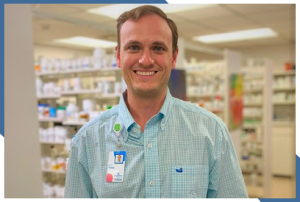Chapter 6: Using specialty pharmacy to optimize 340B revenue and patient outcomes
340B Hospitals Should Build Their Own Specialty Pharmacies
Why a 340B specialty pharmacy?
The ultimate Win-Win scenario for any health system is increasing the quality of patient care, and getting paid to do it.
Chronic illnesses have become increasingly common in the United States. According to a report by The American Hospital Association, the number of Americans with chronic medical conditions will grow by a projected 14 million people between 2020 and 2030. According to some online reports, nearly 80% of new drug introductions are now specialty medications.
Moreover, for 340B-eligible hospitals dealing with increasingly squeezed bottom lines, an in-house specialty pharmacy offers enormous savings and revenue potential. Some covered entities generate as much as 600% in specialty pharmacy revenue from 340B drugs as they do in traditional retail / outpatient pharmacy 340B revenue.
Better patient outcomes. Better health system incomes.
In short, the reason 340B hospitals should build onsite specialty pharmacies is the significantly increased potential for generating 340B savings — and for passing-along those savings to patients in need. Today, hospitals and other 340B covered entities can acquire many specialty drugs for as little as 1¢ — which happens when a drug has hit its 100% Medicaid rebate cap.
In 2016, Humira, the top-selling drug in the U.S., hit the rebate cap. Since that time, 340B hospitals have been able to buy Humira, and many other specialty drugs — including Epclusa, Harvoni, Imbruvica, Iressa, Gilenya, Revlimid and Stelara — at significantly-reduced prices.
Nearly 90% of all large, for-profit hospitals are already operating their own specialty pharmacies. Ultimately, it stands to reason, every 340B health system looking to increase pharmacy revenue will need to consider building their own.
Streamlining 340B patient care
Onsite specialty pharmacies in 340B hospitals offer a seamless approach to caring for the “sickest of the sick” patients they serve. With their expertise, pharmacists at your onsite specialty pharmacy can collaborate closely with your health system’s providers, effectively managing complex medication regimens — while minimizing the risk of medication errors.
Enhancing 340B-patient medication adherence
Medication non-adherence is the number one cause of unnecessary patient readmissions. Onsite pharmacies can play a pivotal role in improving medication adherence among patients likeliest to burden hospitals with costly, compliance-related readmissions.
Working in tandem with its retail pharmacy, a hospital’s specialty pharmacy can create efficient solutions to help manage prescription loads. Onsite specialty pharmacists can engage patients in one-on-one counseling, providing them with essential information about their medications' purposes, potential side effects, and proper administration.
Expanding 340B-patient access to specialty medications
The top two reasons for patient noncompliance with medication protocols are 1) the prohibitive cost of their prescriptions, and 2) the limited availability of those prescriptions. Onsite specialty pharmacies in 340B hospitals can overcome those problems by procuring 340B specialty drugs at discounted prices.
340B specialty-medication cost savings
With your own onsite specialty pharmacy, your hospital can capture a greater percentage of the 340B revenue that would otherwise go to outside pharmacies — supporting your financial stability, while enabling you to expand healthcare services and make infrastructure improvements in serving your community.
Improving overall patient satisfaction
Patient satisfaction is an increasingly essential aspect of the Quality Ratings that impact many 340B health systems’ reimbursement rates.
Onsite 340B specialty pharmacies can contribute to higher satisfaction levels in several ways:
- Reducing patient wait times
- Offering patients greater access to tailored medication services.
- Improving patients’ confidence in their treatment plans.
- Increasing overall trust in the healthcare system.
- Ensuring greater levels of medication compliance.
Facilitating clinical research and innovation
Onsite specialty pharmacies can serve as valuable resources for 340B hospitals conducting clinical research — promoting medical innovation and, ultimately, benefiting patient care for everyone.
Leveraging 340B Data Analytics
The integration of onsite specialty pharmacies within 340B hospitals enables the collection and analysis of comprehensive patient data. With enhanced data-driven insights, 340B hospitals can continually improve their patient care protocols and optimize treatment outcomes.
Overcoming 340B ESP And Drug Manufacturer Restrictions
The majority of 340B-eligible medications under access-restrictions are the most expensive and profitable drugs — which often means specialty drugs. This includes the aforementioned 40-mile-radius restriction and the Single Contract Pharmacy restriction.
Fortunately, there is a workaround for 340B hospitals forced to select a single pharmacy for certain manufacturers’ 340B pricing — and it’s legal in many states. Hospitals can operate specialty pharmacies alongside their retail pharmacies IF the two operations are in separate spaces (with separate Pharmacists-In-Charge), and there is no procedural, functional or personnel overlap between the two.
That said, Opening a specialty pharmacy is extremely challenging — particularly given the effort required just to get access to purchase specialty meds, and then to get “In Network” with PBMs.

Starting A 340B Specialty Pharmacy: What Does The Process Look Like?
Specialty pharmacies require costly accreditation, both financially and in terms of the time investment. You must contract with payers. Securing each contract takes considerable time and effort. You must provide a tremendous amount of data and analytics to PBMs and manufacturers, to prove that you can provide the level of quality patient care expected of Specialty Pharmacies.
Use your hospital’s retail pharmacy to build a specialty pharmacy
A well-run retail pharmacy can generate significant revenue and profits for your health system. Consider setting-aside a percentage of your 340B retail-prescription savings. By earmarking them for funding the project, you can gradually build-out your onsite specialty pharmacy capabilities — while analyzing your clinics and workflows — without drawing large capital expenditures from your budget.
ProxsysRx serves 340B hospitals as a retail pharmacy partner
When ProxsysRx builds-and-owns or manages retail pharmacies for health systems, we only pay ourselves from the revenue and savings we generate on their behalf. We take-on all the risk, so they are never exposed to the potential for loss.

ADDITIONAL READING
Enhancing Patient Care and System Revenue: The Case for Onsite Specialty Pharmacies in 340B Hospitals.
Specialty Pharmacy Best Practices For 340B Hospitals
Meeting specialty pharmacy accreditation standards & policies
As you start building a specialty pharmacy, you can take steps towards accreditation — but you have to make sure that you have the policies, standards and protocols in place to ensure that your specialty pharmacy meets those accreditation standards.
You can actually start filling prescriptions on Day One, but it takes work to find the prescriptions you can fill immediately. Accreditation can take 6 months to a year, depending on the health system and the process of integrating a specialty pharmacy into its resources.
You have to have reporting in place when you begin filling prescriptions. And while you’re filling those prescriptions without accreditation, you're getting in the networks with your PBMs. And then, as you get your pharmacy and process stood up — and its procedures and policies in place — you're able to become accredited.
Specialty pharmacy accreditation metrics
When you become accredited, you have to keep certain metrics for patient phone calls. That means there must be someone in the pharmacy every hour it’s open. Someone who can answer phone calls promptly, so your patients have easy access to a pharmacy professional, who can answer their questions — and make sure they're getting the appropriate care. For accreditation, this confirms that you're a qualified specialty pharmacy, and that you're taking care of your patients in the possible best way.
Specialty pharmacy service-data reporting
There are patient monitoring and clinical assessments that have to be tracked and measured. Every specialty pharmacy patient should be monitored by a clinic pharmacist.
Clinical assessment for specialty pharmacy patients
In initial assessments, specialty pharmacists should ask patients what other medications they’re on, and what side effects they’ve experienced. Specialty pharmacy pharmacists should also work hand-in-hand with patients’ providers, to make sure that medication regimens are appropriate, up to date, and the most accurate regimens for patients and their disease states.
Continuous monitoring & reporting
In addition to ongoing monitoring, most patients should be monitored yearly by pharmacists — to review any side effects they may be having, or any other issues they have taking their medication.
Pharmacists should ask patients if they’ve skipped any medications, and if it’s affected their disease state. Moreover, all of that data should be reported back to the accrediting bodies.
Ensuring patient satisfaction with their specialty pharmacy’s support
Patient satisfaction surveys, conducted by independent third parties, are required — to ensure that you're upholding high standards.
To ensure that you're meeting or exceeding those standards, you should carefully review your specialty pharmacy’s processes. You should also make sure your providers know what it takes to ensure that patients know you care about their outcomes, and that they have the access to the appropriate medication.
Specialty pharmacy shipping & packaging protocols
Most specialty medications are delivered to patients at home. A lot of them require refrigeration, and some have to be frozen. Some need to stay at room temperature, and can't get too hot or too cold.
All of which is why it’s so important that your specialty pharmacy follows shipping and packaging protocols required by the accrediting bodies. You need a Cold Chain Vendor for shipping and packaging medications at appropriate temperatures. You also need processes and policies in to test vendors’ capabilities.
Integrating your specialty pharmacy’s technology with your health system’s technology
ProxsysRx has its own technology platform in place that pulls all the data, so we can create the necessary outlooks and outputs from our analytical tools. Data we then report back, not only to the accrediting bodies, but also to the payers — the PBMs. That way, when we're getting a specialty pharmacy in-network for a patient’s PBM, we can bill for the patient’s care.
That said, your health system should invest in similar software capabilities for your specialty pharmacy.
Integrating Specialty Pharmacy With 340B
ProxsysRx’s unique approach to specialty pharmacy provides health systems with a financial “glide path” to help fund their specialty pharmacies. One that starts with optimizing their 340B network. We’ve proven that ProxsysRx can help health systems improve revenues — often by millions of dollars annually — while their specialty pharmacies are being built. More importantly, we do it while helping hospitals improve the quality of patient care.
There are so many ways to optimize a 340B program, while making it more compliant. And it’s changing all the time, so we’re always looking for new ways to ensure that we’re capturing everything coming out a health system.
Avoiding negative specialty pharmacy 340B reimbursements
What causes negative reimbursement? Several factors, including:
- #1 Overlooking 340B dispense status
- Purchasing drugs at WAC instead of on a 340B account
- Receiving 340B specialty pharmacy drugs without PBM access
Overcoming 340B PBM / payor hurdles
Many PBMs will not pay for prescriptions right out of the gate, so there are a lot of hurdles you have to jump with payors to get drugs covered. Even after 340B specialty drugs are covered, copays can be very high — sometimes thousands of dollars. Most patients can't afford copays that high, so you need to know how to get copay assistance. There are a number manufacturer programs, and other assistance programs — including charity care. Learn to use all those options, to make sure your patients can get their prescriptions promptly.
Performing prior authorizations for specialty drugs
Another benefit of having a pharmacist embedded in the clinic where your patients are is: They’re able to look for financial assistance, and perform those prior authorizations — making sure that prescriptions are going to be paid for, and that patients can afford them.
The 340B Retail / Specialty Pharmacy Relationship
Meeting all of a patient’s medication needs
Very often, patients have prescriptions from both a hospital’s retail pharmacy and its specialty pharmacy. Make sure each pharmacy team always knows what the other is doing, as far as providing for those patients — even to the point where patients can routinely call your retail pharmacy with questions, and get answers about their specialty drugs.
Of course, when it comes to anything clinical about patient monitoring, or anything that has to do with high-complexity meds, patients should be connected with clinical pharmacists familiar with their disease states.
You should also ensure that specialty-medication patients speak to your clinical pharmacists before each refill, to answer questions or concerns — and check for medication effectiveness and side effects.
Why ProxsysRx For Your 340B Hospital’s Specialty Pharmacy?
Helping fund your 340B specialty pharmacy
ProxsysRx helps health systems create a financial glide path to build their specialty pharmacies. A path that ensures the burden of financing their specialty pharmacy is of little to no risk to the health system.
Minimizing the burden of opening a 340B specialty pharmacy
We take the burden of opening a specialty pharmacy off your health system. We navigate you through the process of getting your specialty pharmacy running and successful. We handle the accreditation requirements. We get you access to the medications you need. We get you access to the payors.
Clinically integrating your 340B specialty pharmacy
We also take responsibility for integrating your specialty pharmacy with your clinic teams. Then we take-on everything that's required to grow your specialty pharmacy. We get to know your doctors, your clinicians, and your patients — so that we can tailor your specialty pharmacy’s services and medications to the needs of your patients, and the difficult disease states that your health system needs to manage.

ADDITIONAL READING
Best Practices For A 340B Hospital Looking To Build An Onsite Specialty Pharmacy
Chapter 7: 340B’s Outlook For 2024, And How To Prepare Your Program.
What the changing 340B landscape means for your health system.
Between late 2019 and the end of 2023, ProxsysRx’s 340B Team generated more than $500 million in 340B revenue for the hospitals and health systems we serve. In spite of the drug manufacturer restrictions that have devastated many hospitals’ programs, every one of the 13 health systems we serve and support has enjoyed significant 340B-revenue increases.
One thing 340B program veterans Heather Brooks and Chance Spivey know for certain is, nobody should ever consider themselves a 340B Expert. “I can’t tell you how often this happens,” says Chance: “I start my day by reading an email that changes all of the data analytics I’d been using to submit a significant percentage of my clients’ 340B prescriptions.”
Potential 2024 developments for 340B
In an article dated January 5, 340B Report projected that “In 2024, congressional gridlock and election year dynamics will likely slow momentum on any comprehensive 340B program reform package.”
At the same time, there has been a lot of regulatory activity at the state level — specifically, where manufacturer restrictions concerned. We may, therefore, see more states taking similar action in 2024. If not, it’s likely that even more manufacturers will add new restrictions.
How Covered Entities Should Prepare for 340B Changes In 2024
Build a team fully capable of managing your 340B program
In our experience, most hospitals’ 340B teams are comprised only of the Director of Pharmacy and a Pharmacy Tech. That doesn't work, and it never will.
Invest in specialized 340B program software.
Whatever software platform you use to manage your 340B program should minimize the unnecessary legwork your team-members undertake to submit prescriptions. “The 340B program’s ultimate challenge,” Chance continues, “is to pull-together all the moving parts. In our experience, every covered entity managing its own 340B program gets everything in pieces, but they don't have all the pieces in one place.”
Carefully evaluate your 340B contract pharmacy and TPA networks.
As we noted in an in-depth blog post, every health system ProxsysRx serves came to us with shortcomings in their contract pharmacy networks. The average number of quality 340B contract pharmacies we’ve added to their networks is five to ten.
You should also carefully evaluate your 340B program TPAs. “For instance,” notes Heather, “While we were onboarding one 340B hospital, we discovered a TPA that was charging them a percentage of every prescription matched. We renegotiated their service contract to a flat fee basis, which saved the hospital $400,000 in just one year.”
Review and update your 340B program’s Best Practices.
For an overview of tips to ensure that your 340B program is maintaining best practices, click here. To discuss best-practice updates we’ve implemented since publishing that blog post, contact us anytime.
Learn from, and share with, other 340B covered entities.
“Once our 340B program was large enough,” says Chance, “we assigned team members to their own health systems. ProxsysRx now supports every major private-sector covered entity category (DSH, RRC, PED, CAH, RHC, FQHC). Needless to say, that has had a tremendous impact on our collective 340B program knowledge and experience.
If your health system is managing its own 340B program, it is critically-important that you build a network of covered entities for sharing knowledge and ideas.
Take full advantage of your 340B specialty pharmacy opportunities.
As we’ve discussed in this resource guide’s Chapter Six, the ideal option for optimizing your health system’s 340B specialty-prescription revenue (not to mention patient outcomes) is to have your own onsite specialty pharmacy.
Qualities Common To Successful 340B Programs
A solid understanding of 340B program benefits
Launching and maintaining a successful 340B program starts with your health system truly understanding 340B’s savings and revenue potential — and, in turn, the potential of your 340B income to positively impact patient outcomes, not to mention your system’s overall mission in the community you serve.
A system-wide culture of 340B program support
“The hospitals who benefit the most from working with us,” says Heather, “are the ones who are willing to collaborate with us, and recognize that they can trust us. We do the vast majority of the work, but we still need their support — particularly in responding to our team’s data requests.”
A commitment to optimizing 340B clinical opportunities
“It’s no secret that some covered entities have more existing 340B opportunities than others,” Heather continues, “because they have more 340B-compatible clinical programs. We’ve helped number of health systems add clinical programs that can serve new 340B-eligible patients.”
“Ultimately,” Chance concludes, “what gives me the greatest job satisfaction from serving health systems’ 340B programs is my ability to positively impact their missions. I consider myself to be more than just a partner of those hospitals. In a very real sense, I’m an extension of their missions.”







